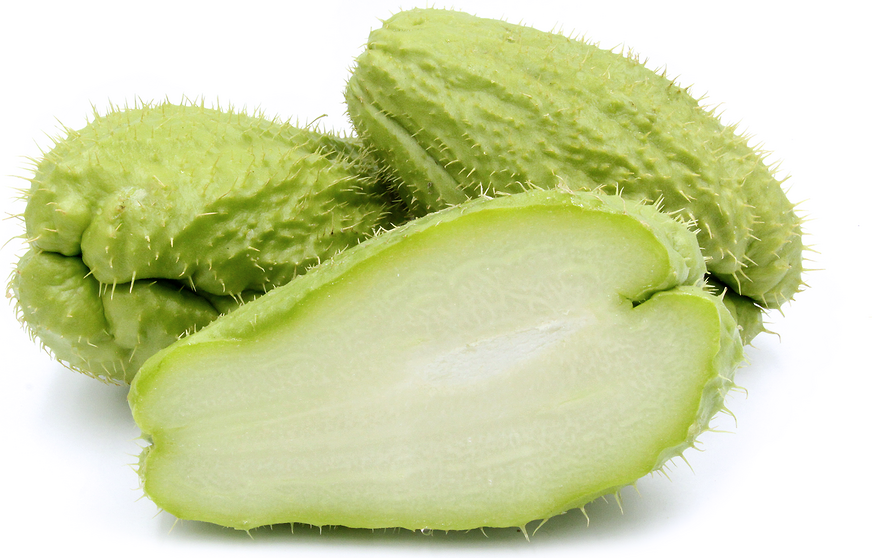
Chayote squash is crunchy and very mild with a slightly sweet taste and light notes of cucumber. The creamy white flesh is crisp to starchy and becomes succulent to cottony as it matures, and the central core contains one small, edible seed. The pale green rind is thin, smooth, firm, and edible but is often discarded because of its tough nature.
#Chayote squash skin#
T.Chayote squash is small to medium in size, averaging 10-20 centimeters in length, and has a pear-like shape with deep linear indentations, folds, or puckers that run vertically along the fruit's skin that meet at its flower end. The Wheel of Health: The Sources of Long Life and Health Among the Hunza by Dr. Soil Science for Gardeners by Robert Pavlis

The Complete Guide to Restoring Your Soil by Dale Strickler Keeping Bees with a Smile by Fedor Lazutin and Leo Sharashkinīalanced Beekeeping I: Building a Top Bar Hive by Philip Chandlerīalanced Beekeeping II: Managing the Top Bar Hive by Philip Chandler The Decline and Fall of the Roman Empire (Book 4 of 8) by Edward Gibbon The Decline and Fall of the Roman Empire (Book 3 of 8) by Edward Gibbon The Decline and Fall of the Roman Empire (Book 2 of 8) by Edward Gibbon

The Decline and Fall of the Roman Empire (Book 1 of 8) by Edward Gibbon Holistic Management, Third Edition: A Commonsense Revolution to Restore Our Environment by Allan SavoryĪn Agricultural Testament by Sir Albert Howard Three Men in a Boat (To Say Nothing of the Dog) by Jerome K. The Decline and Fall of the Roman Empire (Book 5 of 8) by Edward Gibbon I hope you are safe from these crazy hurricanes. We love the dreaded “Z” squash and are hoping this will become our new perennial food source. Also since we rarely go much below freezing and hardly ever hard freeze do you think if I much with straw or hay and use a water barrel as a warm mass protector I would have a good chance of root survival? Let me know what you think. I was wondering if the vine can be rooted and grown inside to hedge my bet on survival like I am doing with coccinia grandis and my bolivian cucumber vines. I saw your video about Chayote surviving winter and I used your “Pushing the Zone” techniques and planted them on South side of my house. We are in UK hardiness zone 9b which rarely hard freezes like our beloved Florida. Hello David, I got a late start this year growing my chayote but it has rooted well and they both have three vines but I do not think they are going to make fruit this year as winter seems to be starting early this year. Though I’ll bet I’m the only one growing them on a pomegranate tree. It has the potential to be a remarkably productive plant – I’ve heard of folks around here getting close to a hundred fruits and having the vines climb way up into the oaks. Mother Earth News did a good article on chayote a few decades back and the link is here. (Let me know if you’ve heard differently or if you have luck – I always love to hear gardening stories.) They don’t start setting fruit until the fall, so if you live too far north (say, past Georgia) it may be impossible to get a good yield. Growing chayote squash as a perennial is possible in warmer areas of the state, and may even be possible up here in North Florida however, this is my first year of successful chayote growing so I’m not sure if the vines will come back or not. Speaking of Joe, when I was filming the cob oven video, he also did a quick demonstration of a homemade pump drill / bow drill firestarter – I just posted the video on my channel a couple of days ago: They’ll grow big crazy vines right out of the end of the fruit… very strange. Since frost will take a chayote squash vine to the ground, he puts some of the final fruits of fall on the porch and lets them sit until spring when they can be planted out again. These chayote originally came from my friend Joe Pierce of cob oven fame. I buried mine half-way in the ground and they did fine. To grow a new vine, you need to plant the fruit itself.

Instead, they entire fruit surrounds a single embryo in the middle. Unlike their squash cousins, chayote don’t produce seeds. A still growing chayote fruit almost ready for harvest.


 0 kommentar(er)
0 kommentar(er)
